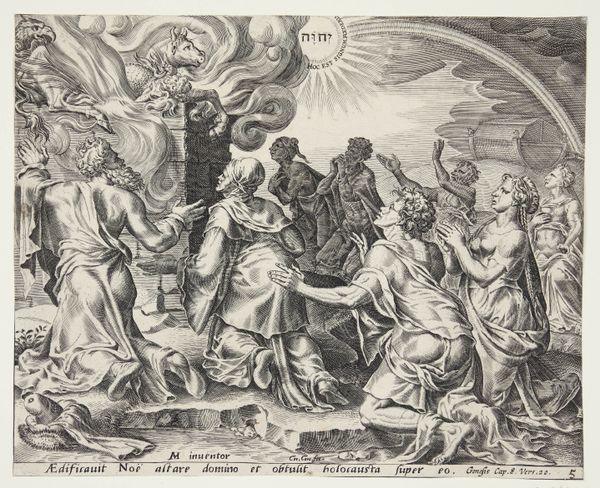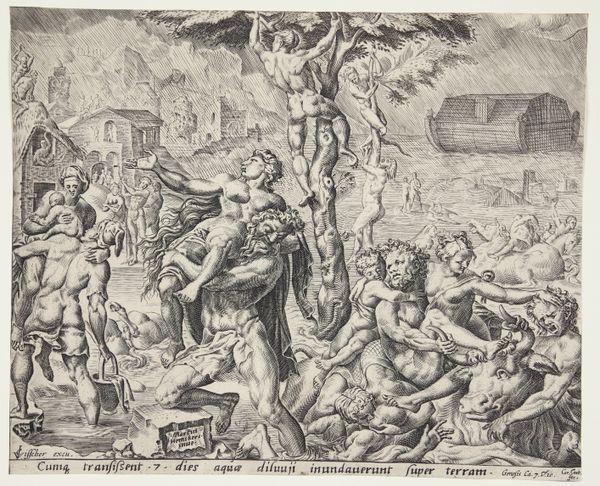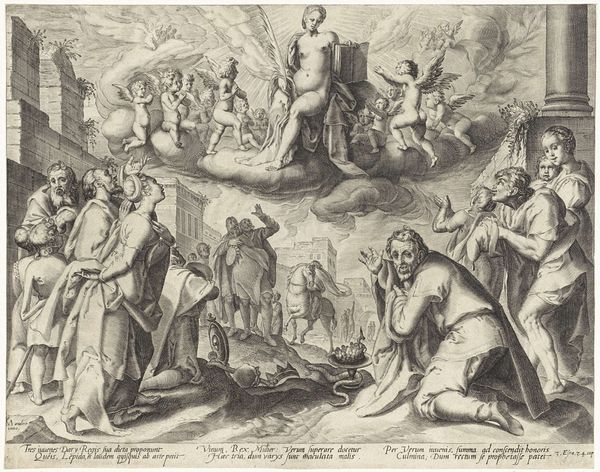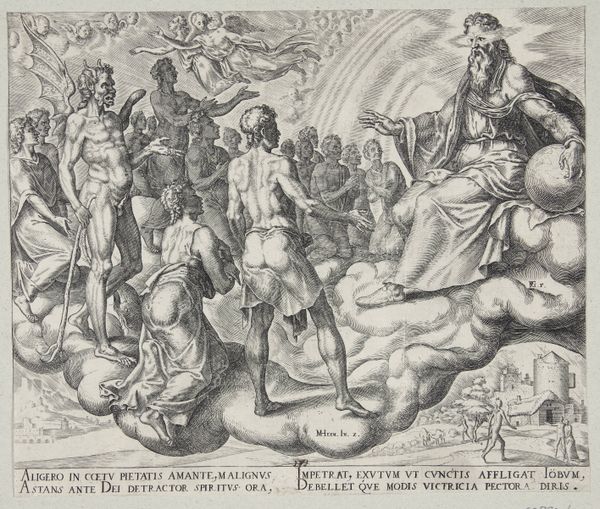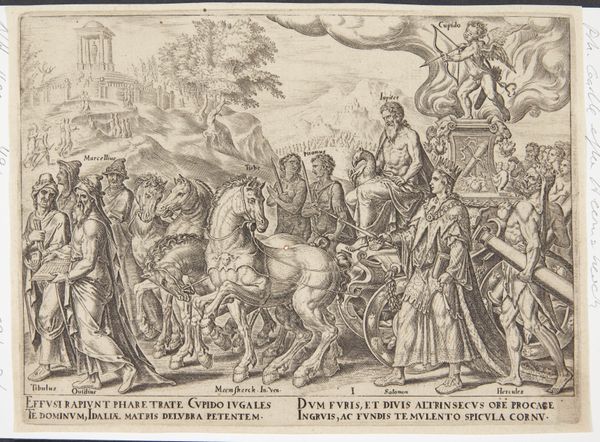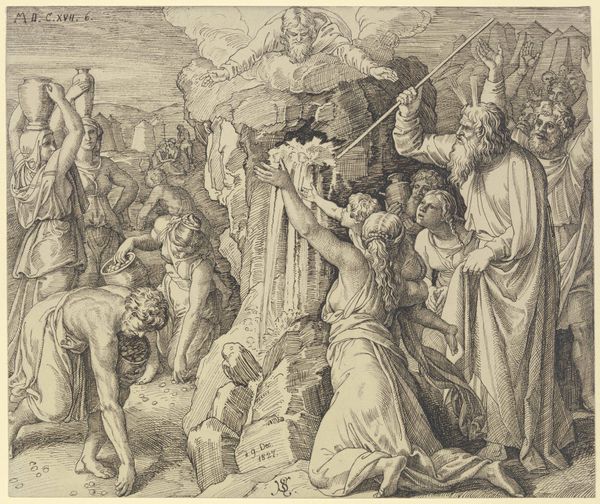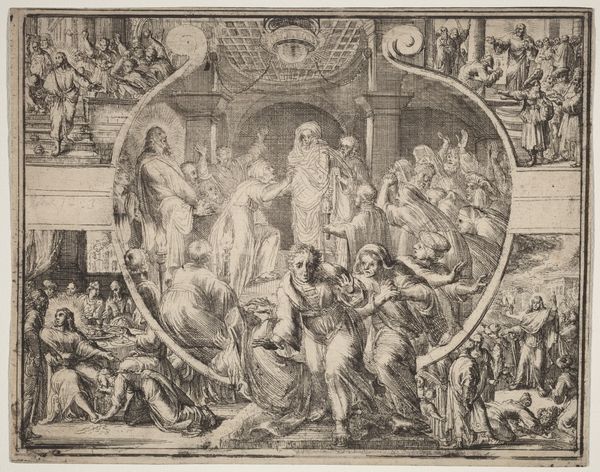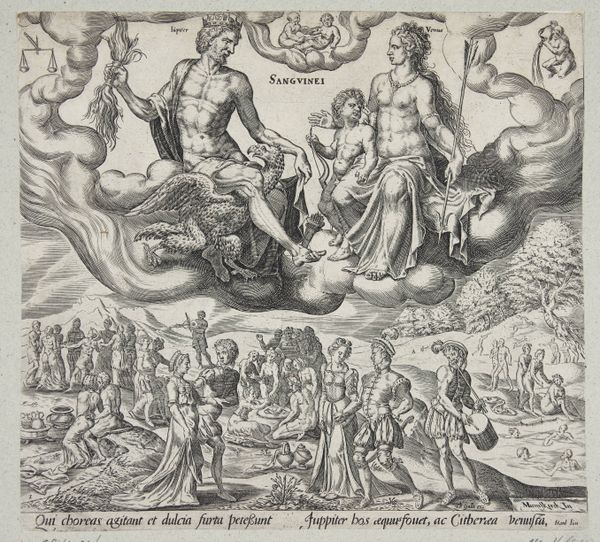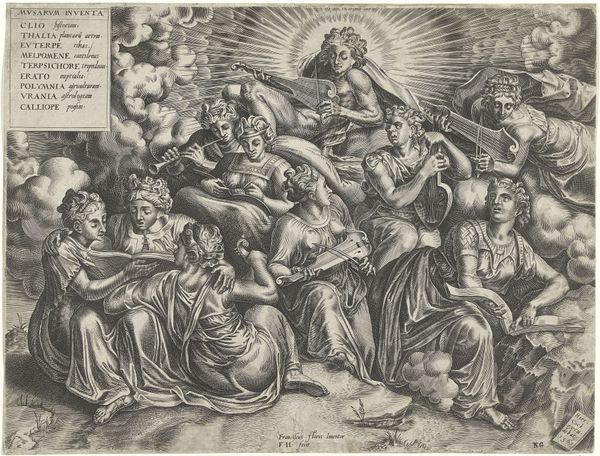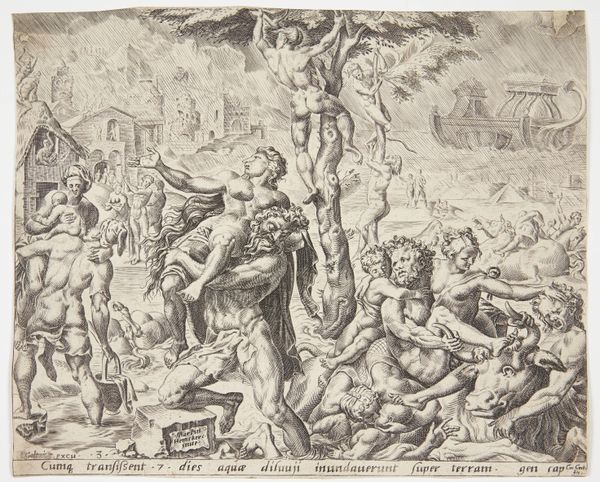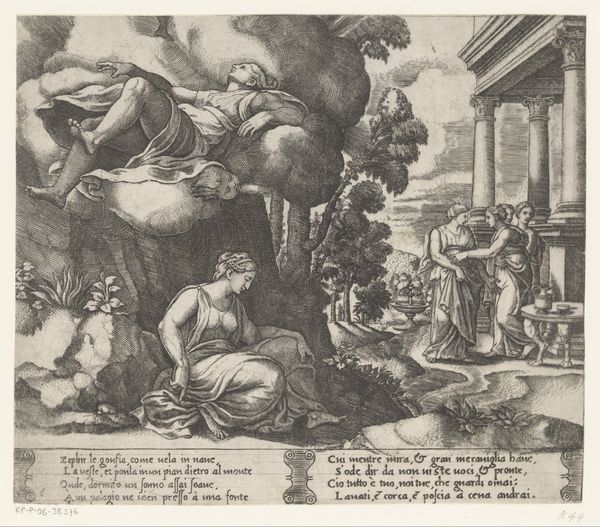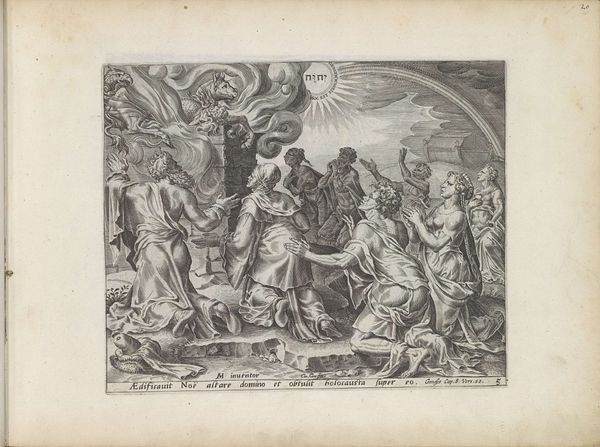
Satan challeninging the lord to remove his protection from Job 1563
0:00
0:00
print, engraving
#
allegory
# print
#
mannerism
#
figuration
#
history-painting
#
engraving
Dimensions: 203 mm (height) x 242 mm (width) (bladmaal)
Curator: Let's consider this 1563 engraving by Philips Galle titled "Satan challenging the Lord to remove his protection from Job," currently held at the SMK in Copenhagen. The scene feels incredibly tense, even theatrical. Editor: I see a carefully constructed composition; a dramatic dance almost entirely crafted of tonal gradients. The medium itself, engraving, suggests a labor-intensive, and controlled process. It makes you wonder, what was the workshop that created this like? Curator: Absolutely. And if we consider the socio-political context of Mannerism at this time, the stylistic choices and the very themes explored in Galle’s print begin to speak volumes. The story of Job, after all, tackles questions of faith, suffering, and divine justice at a time when religious reformations were shaking European society. The very visual style, mannerism, emphasizes the very artificial nature of representation that reminds us that faith is being visually constructed by outside, powerful figures. Editor: Interesting point. This piece obviously aims to instill faith into a large audience, yet I think it could easily encourage more open interpretation of its story. And yes, this level of intricacy doesn’t just *appear*. It is an industrialized print for consumption; someone had to translate theological anxiety through skilled craft labor. There is this clear push and pull between this detailed production and what is being promoted, that is certainly revealing. Curator: The engraving format allowed the wider circulation of images that served very particular functions: reinforcing moral norms or conveying social ideals, even critiquing them in allegorical ways. This particular scene presents us with a confrontation: a seemingly vulnerable humanity threatened by a powerful Satan and overseen by an unyielding God. Editor: This contrast highlights the human body – that itself has become an aesthetic object of study– rendered in ink on paper through what you astutely noted, are particular aesthetic norms! To create art like this is itself, at times, a form of resistance to certain religious orthodoxies because the artistic practice often leads to broader interpretations. Curator: Viewing Galle’s “Satan challenging the Lord” provides a stark visual narrative deeply rooted in a period grappling with social and theological shifts. Through allegory, Galle’s art subtly opens questions, even critiques power dynamics within his contemporary world. Editor: Agreed, and in a piece like this, seeing the intersection of skilled labour, available material and consumer demand can itself show us something else about the relationship between making, power, and belief.
Comments
No comments
Be the first to comment and join the conversation on the ultimate creative platform.
